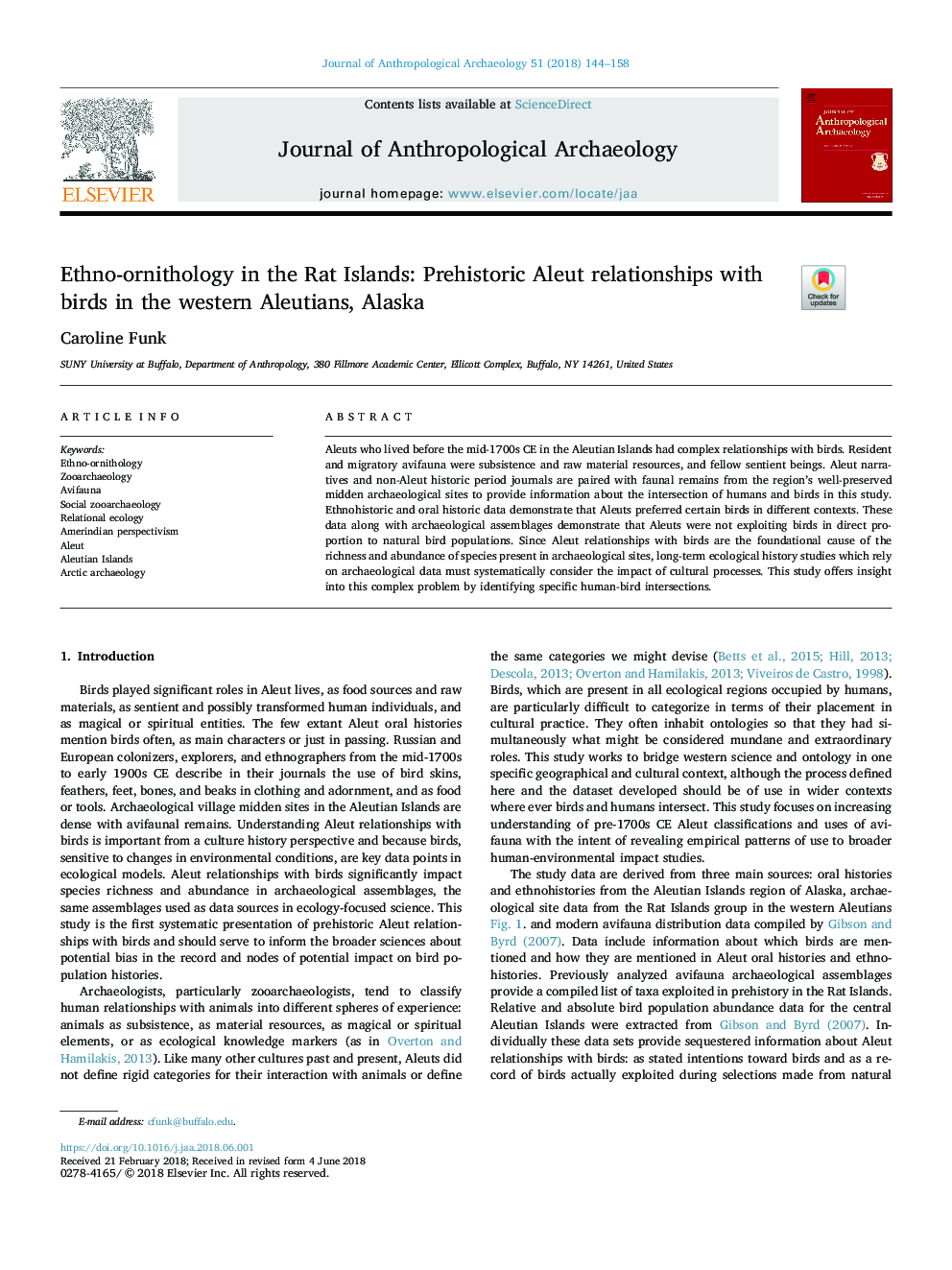| Article ID | Journal | Published Year | Pages | File Type |
|---|---|---|---|---|
| 7440356 | Journal of Anthropological Archaeology | 2018 | 15 Pages |
Abstract
Aleuts who lived before the mid-1700s CE in the Aleutian Islands had complex relationships with birds. Resident and migratory avifauna were subsistence and raw material resources, and fellow sentient beings. Aleut narratives and non-Aleut historic period journals are paired with faunal remains from the region's well-preserved midden archaeological sites to provide information about the intersection of humans and birds in this study. Ethnohistoric and oral historic data demonstrate that Aleuts preferred certain birds in different contexts. These data along with archaeological assemblages demonstrate that Aleuts were not exploiting birds in direct proportion to natural bird populations. Since Aleut relationships with birds are the foundational cause of the richness and abundance of species present in archaeological sites, long-term ecological history studies which rely on archaeological data must systematically consider the impact of cultural processes. This study offers insight into this complex problem by identifying specific human-bird intersections.
Related Topics
Social Sciences and Humanities
Arts and Humanities
History
Authors
Caroline Funk,
